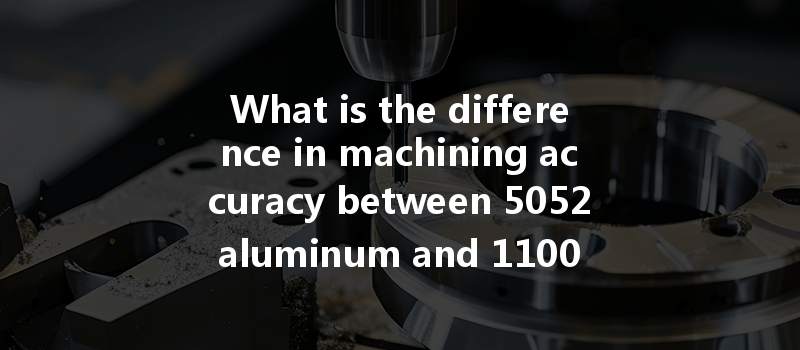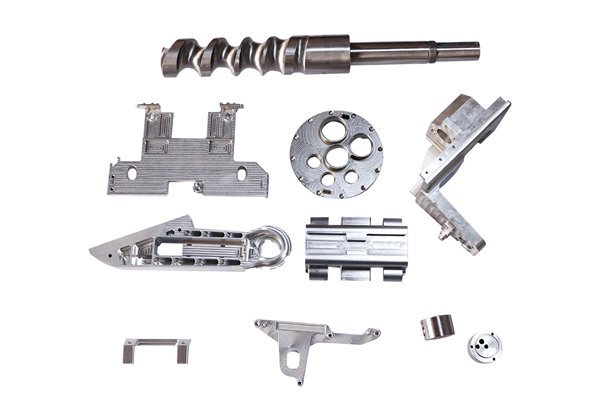Opening: An Interesting Fact
Did you know that aluminum is one of the most widely used metals in modern manufacturing? According to the Aluminum Association, around 45 million tons of aluminum were produced globally in 2021, with machinable aluminum alloys leading the way in diverse applications—from aerospace components to consumer goods. Two of the most common aluminum alloys used in CNC machining—5052 and 1100—often spark a debate among engineers and manufacturers regarding their performance, particularly in terms of machining accuracy. But what sets these alloys apart, and how does that affect machining processes in the realm of computer numerical control (CNC)?
—
Understanding Aluminum Alloys
Before diving into the specifics of machining accuracy, it’s essential to grasp the differences between 5052 and 1100 aluminum alloy.
5052 Aluminum
5052 aluminum is a high-strength alloy known for its excellent corrosion resistance, weldability, and formability. It contains magnesium as its primary alloying element (around 2.2–2.8%) and has a moderate strength-to-weight ratio, making it suitable for demanding applications such as marine environments, automotive components, and pressure vessels.
1100 Aluminum
On the other hand, 1100 aluminum is a commercially pure aluminum alloy (99.0% minimum aluminum content). While it doesn’t provide the enhanced strength of 5052, it offers outstanding ductility, thermal and electrical conductivity, and excellent resistance to corrosion. This makes it ideal for chemical handling applications, food processing, and decorative purposes.
—
Machining Accuracy: A Key Performance Indicator
Machining accuracy is a pivotal parameter in CNC processes that directly affects the quality and functionality of the final product. It encompasses several aspects, including dimensional tolerances, surface finish, and geometric consistency.
Factors Influencing Machining Accuracy
—
Comparing Machining Accuracy Between 5052 and 1100 Aluminum
One primary area of comparison is dimensional tolerances—the acceptable range of variations in a part’s size.
Surface finish impacts both functionality and aesthetics.

Geometric consistency refers to how uniformly the part matches intended design specifications.
—
Achieving High Accuracy in CNC Machining
To navigate the differences between these two alloys, it’s imperative to adopt specific strategies and techniques.
Choosing the appropriate aluminum alloy based on the application’s requirements is fundamental. If machining accuracy and high strength are of utmost importance, 5052 aluminum is likely the better choice. However, for applications prioritizing ductility and corrosion resistance without stringent strength requirements, 1100 may be preferable.
Investing in high-quality, specialized cutting tools can significantly enhance machining accuracy. Selecting tools designed specifically for the chosen aluminum alloy can mitigate issues such as tool wear and thermal stress.
Carefully optimizing CNC settings—such as spindle speed, feed rate, and cutting depth—can lead to considerable production improvements. Conducting test runs can help establish the best parameters, ensuring the desired accuracy is achieved without compromising material integrity.
Employing state-of-the-art CNC machines and software can enhance precision. Features like adaptive cutting, tool path optimization, and real-time monitoring enable operators to make adjustments based on feedback, which fosters improved accuracy.
—
: Understanding the Fine Line Between Alloys
In summary, the difference in machining accuracy between 5052 aluminum and 1100 aluminum in CNC processes boils down to their unique material properties and how these influence machining outcomes. While 5052 may offer tighter tolerances and favorable surface finishes, 1100 aluminum excels in geometric consistency and ease of machining.
Choosing the right aluminum alloy for your machining project is a critical decision that can significantly impact the quality of the final product. As manufacturing technologies continue to evolve, understanding these differences allows engineers and manufacturers to better meet the needs of their specific applications while ensuring precision and efficiency.
Why This Blog is Important
This blog provides valuable insights into two widely used aluminum alloys in CNC processes, equipping manufacturers and engineers with the knowledge needed to make informed decisions that enhance the accuracy and quality of machined components. The careful consideration of material properties, tooling, and CNC optimization reflects a modern approach to manufacturing that is vital not just for product success, but also for driving innovation in the industry.
Remember, selecting the appropriate material and optimizing machining processes can lead to significant cost and time savings while ensuring product quality and performance—an essential factor in today’s competitive landscape.






